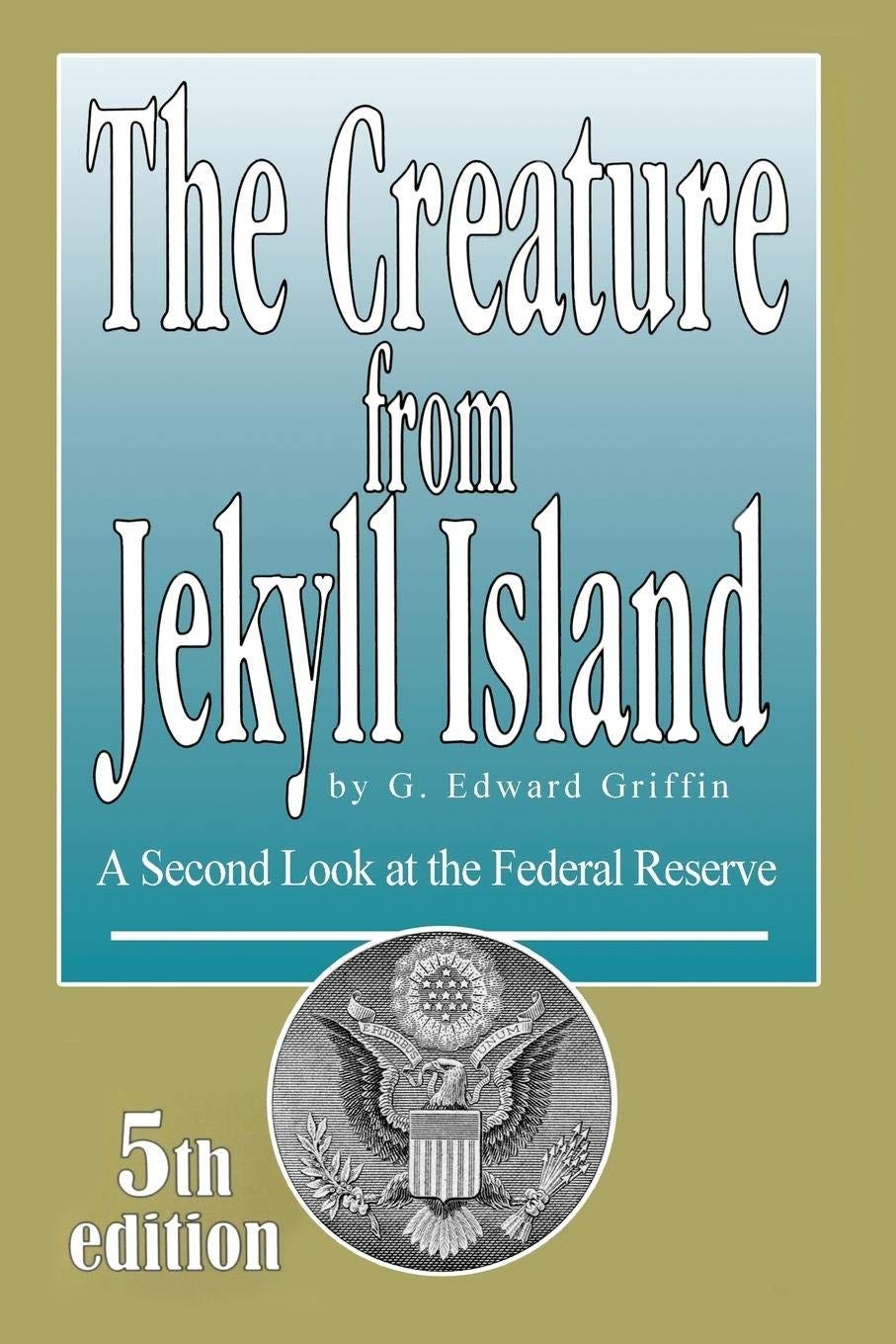On This Day A Creature That Rules The World Was Born
On This Day A Creature That Rules The World Was Born
The Creature from Jekyll Island
On this day, exactly 110 years ago, the financial landscape of the world was quietly reshaped with the birth of the Federal Reserve System. This anniversary marks a moment that continues to exert a profound influence on banking and the daily lives of billions.
The Federal Reserve, often simply referred to as "The Fed," stands as the central banking system of the United States. It dominates not just American banking but also has far-reaching implications on global finance. Tasked with managing the nation's monetary policy, regulating banks, stabilising the financial system, and providing financial services, the Fed's decisions ripple through the World’s economies, affecting everything from interest rates to the amount of money in circulation.
To fully understand how the Federal Reserve was created and how it continues to dominate, G. Edward Griffin's "The Creature from Jekyll Island" emerges as a compelling must-read. More than just an examination of the Federal Reserve, this 608-page book unfolds like a gripping mystery novel, revealing the intricate and often obscured mechanisms of this powerful institution.
The story Griffin tells is one rooted in secrecy and strategy. It begins in the early 20th century, a time when the financial reins were held by a few but powerful banking conglomerates like Morgan, Rockefeller, Rothschild, Warburg, and Kuhn-Loeb. The landscape of American banking was changing, with new banks emerging and a trend toward reduced borrowing and internal investment, which threatened the dominance of these financial titans.
In response to this emerging threat, representatives from these banking giants convened in November 1910 under a veil of secrecy on Jekyll Island, Georgia. This gathering, orchestrated in utmost secrecy, was attended by notable figures such as Senator Nelson W. Aldrich, Henry P. Davison of J.P. Morgan & Co., Benjamin Strong of Bankers Trust, and Paul Warburg, a representative of the Rothschild banking dynasty in Europe. Together, these financial titans laid the foundation for what would become the Federal Reserve System. Under the guise of a duck hunting expedition, they designed a plan to establish a central banking authority, a move that would centralise control over the nation's financial resources and reshape the American economic landscape for generations to come.
This clandestine meeting was more than a gathering of minds; it was a strategic move to regain control over the financial markets. Griffin reveals that the plan was ingeniously crafted to appear as a public good while establishing a banking cartel, bolstering the power and influence of its creators.
On this day (23 December), 110 years ago, the Federal Reserve Act, crafted from the concepts developed at Jekyll Island, was strategically passed during the 1913 Christmas season. This timing was crucial; many Congress members were absent, minimising potential opposition. The Act was swiftly moved through Congress, facing little scrutiny or debate.
Griffin's exploration delves deep into the nature of money itself and the transformative impact of the Federal Reserve's creation of fiat money – currency without intrinsic value and not backed by physical commodities like gold or silver. He introduces the 'Mandrake Mechanism', a metaphor for the Federal Reserve's ability to create money from nothing, inflating the currency supply at the expense of its value.
The book doesn't just focus on the establishment of the Federal Reserve but also draws parallels with past attempts at centralised banking in the United States, citing examples from 1781, 1791, and 1816. Griffin paints these institutions as precursors to the Federal Reserve, operating on similar principles and resulting in comparable consequences for the public wealth.
As Griffin critically assesses the impact of the Federal Reserve, he describes it as a predatory entity, contradicting its promised roles of economic stability and public service. The Federal Reserve, in his view, has contributed to cycles of economic upheaval, poverty, and an overarching move toward governmental control and tyranny.
As we reflect on the 110 years since the Federal Reserve's establishment, Griffin's work invites us to speculate about the future, given the current trends and patterns. While the projections might be unsettling, they serve as a wake-up call for potential change and action.
In advocating for the abolition of the Federal Reserve, Griffin lists several reasons: its failure to meet objectives, its nature as a public-harming cartel, its fostering of usury, its creation of inflation, its encouragement of wars, its economic destabilisation, and its role as an instrument of totalitarianism.
"The Creature from Jekyll Island" is more than just a historical account; it's a critical examination of a powerful entity that has shaped and continues to shape our financial and political landscape. On this 110th anniversary of the Federal Reserve, Griffin's book stands as a crucial resource for those seeking to understand the complexities and implications of this influential institution.
And for those who don’t have time to read over 600 pages, here is a recent interview Griffin took part in, where he discusses his book and explains why he thinks the central banking cartels are the biggest socioeconomic problem in the world today.
Source: The Naked Emperor's Newsletter

Comments
Post a Comment